- Creaig Dunton
- Albums and Singles
 On their debut EP, Relations deliver four tracks that could come across as hipster synth-pop nostalgia, but the earnestness and catchiness of the songs make that a non-issue, resulting in a set of tracks that sound familiar, yet new to anyone who grew up with the music of the early 1980s.
On their debut EP, Relations deliver four tracks that could come across as hipster synth-pop nostalgia, but the earnestness and catchiness of the songs make that a non-issue, resulting in a set of tracks that sound familiar, yet new to anyone who grew up with the music of the early 1980s.
The duo of Terence Murren and Michael Sanders go the extra mile to develop an "authentic" sound:while the drums are programmed, the synths are live, bringing back the slightly imperfect, but memorable days of pre-MIDI electronic pop.The repetitive melodies and rhythms of "Take No Sides" more then recall a bit of Suicide, with slightly more polish and actual guitars, while keeping that occasional punky sloppiness.
"A Savage Way To Live" begins with a lo-fi synth bass line that is initially a bit too dull, but after pulling off in different directions comes together nicely into a catchy stomp that keeps the pop hooks even amid noisy, raw outbursts.On "Careless Days," the mix is scaled back for a more rudimentary structure, with some noisy and therefore great guitar coming in later on.
Considering this is a debut EP, the biggest shortcoming is understandable and easier to swallow.The vocals on all four tracks have the detached, monotone sound that so many post punk and new wave artists traded in, but sound a bit too similar track to track.With more time and recordings, I would not see this to be an enduring problem.
With that out of the way, Relations' debut EP reminds me of a less goth Cold Cave in the sense of they create music aesthetically rooted in the early 1980s, but come across not as a nostalgia act or hipsters riding a trend, but earnest artists working within a genre that they truly love.These four tracks get that precarious balance of pop hooks, odd electronic sounds, and dissonant outbursts right to create memorable "songs," which is too often ignored for the sake of texture and noise.
Read More
- Administrator
- Albums and Singles

It is a true pleasure to announce the third full length release from West Coast dub heads Peaking Lights: Lucifer. With it, the golden duo of Aaron Coyes and Indra Dunis continue to crystallize their mesmerizing sound and find new dimensions within. Lucifer also comes at a time of great transition for this married couple and it reflects the possibilities that they have found during this new life era, especially with the birth of their son, Mikko- a guiding light muse for the album.
Recorded in Brooklyn at Gary’s Electric studio over the course of a month, Peaking Lights consider Lucifer a nocturnal version of their sound. It's slinkier and full of grooves. "To us this record is about play and playfulness, unconditional love, rhythms and pulses, creation and vibration," says Coyes. Lucifer is also Peaking Lights' most ambitious release to date in terms of its approach and scope. Through their studio experiments, the duo has managed to link their musical loves—dub, krautrock, analog electronic dance music, sound collages, pop music—all while maintaining cohesive songs. Lucifer was self-produced and engineered by Al Carlson (Yeasayer, Ford & Lopatin, 0PN).
Though the name Lucifer may carry sinister connotations to some, to Peaking Lights it represents the start of something new. "All of our record titles have come to us in dreams, daydreams and epiphanies." says Coyes. "Lucifer sat so strong with us. It means 'Venus, bearer of light' and is the first sign of the sunrise. There are some major astrological and astronomical events involving Venus in this year of 2012."
The songs on Lucifer, by most people that have heard them, so far conjour a night time version of previous works, music to soundtrack the moonrise to the sunrise. To Indra and I, though there are similarities to earlier recordings, this stands on its own its changed us, or maybe we were already changed when we wrote it and it is that cathartic release. There was a new approach to recording our rhythms and we were able to see thru many more influences. To us this record is about play and playfulness, unconditional love, rhythms and pulses, creation and vibration we are really happy to share these recordings!
Aaron and Indra have garnered attention for their amazing mixes of super rare and smartly curated jams-here is one to check out with a selection of as-yet unidentified snippets of music from their new record on the newly-live Lucifer.fm
The album comes out on June 19th. More information is available here.
Read More
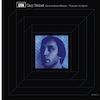 Despite recording some landmark works with GRM (including a masterful triple LP with Pierre Schaeffer in the '60s), Guy Reibel is a name that is often forgotten when discussing musique concrète. While fame (as far as fame for experimental 20th century composers goes) has eluded him compared to other members of the GRM, his music has always delivered. This album, originally released in 1978, shows Reibel in particularly good light as he creates an unprecedented, and since unmatched, sonic vocabulary.
Despite recording some landmark works with GRM (including a masterful triple LP with Pierre Schaeffer in the '60s), Guy Reibel is a name that is often forgotten when discussing musique concrète. While fame (as far as fame for experimental 20th century composers goes) has eluded him compared to other members of the GRM, his music has always delivered. This album, originally released in 1978, shows Reibel in particularly good light as he creates an unprecedented, and since unmatched, sonic vocabulary.
- Administrator
- Albums and Singles
 Despite recording some landmark works with GRM (including a masterful triple LP with Pierre Schaeffer in the '60s), Guy Reibel is a name that is often forgotten when discussing musique concrète. While fame (as far as fame for experimental 20th century composers goes) has eluded him compared to other members of the GRM, his music has always delivered. This album, originally released in 1978, shows Reibel in particularly good light as he creates an unprecedented, and since unmatched, sonic vocabulary.
Despite recording some landmark works with GRM (including a masterful triple LP with Pierre Schaeffer in the '60s), Guy Reibel is a name that is often forgotten when discussing musique concrète. While fame (as far as fame for experimental 20th century composers goes) has eluded him compared to other members of the GRM, his music has always delivered. This album, originally released in 1978, shows Reibel in particularly good light as he creates an unprecedented, and since unmatched, sonic vocabulary.
Although Granulations-Sillages/Franges Du Signe has been issued on CD, it has been difficult to track down and, like the Pierre Schaeffer LP also out this month, Editions Mego have done a wonderful job on their reissue via the Recollection GRM sub-label. As well as sounding incredible, the sleeve notes fill in some of the difficult details around the two compositions presented here. Both take the idea of space and rhythm to a point beyond what can be explored with normal instruments. Reibel’s background in engineering and his interest in the mathematics behind sound or indeed how mathematics could be expressed using sound makes for complex, indecipherable music that challenges any common assumptions about what music is or should be.
Although intended for a sound system consisting of six speakers, "Granulations-Sillages" translates well to a normal stereo set up. While I can only imagine the spatial depth and acoustic effects that would have occurred with half a dozen speakers, here the result is still startling and unpredictable, even after engaging with it many times. Reibel employs very rough noises, probing the limits of human perception across multiple domains. Reibel works in a way that remains abstract but pulls the listener into a rich world of sound by immersing them in a three-dimensional space. It honestly feels that I could reach out and touch the sounds as the form around me.
"Franges du Signe" is a slightly earlier work that preempts and informs Reibel’s work on "Granulations-Sillages." However, where "Granulations-Sillages" was controlled and had an alien beauty about it, here Reibel appears to let loose with a chaotic and fiery piece which takes the idea of a mathematical limit and examines the properties of such limits when applied to real world phenomena like sound. It is remarkable stuff, conflicting rhythms and unusual textures coming together to form an elemental whole. An almost serene mood develops as the volume lowers to a point where I am tempted to turn everything up but I resist that urge for fear of a resurgence of loud noises blowing up my stereo (which, it turns out, is what would have happened…).
Granulations-Sillages/Franges Du Signe, along with Pierre Schaeffer’s Le Trièdre Fertile, represents a significant opening volley from Recollection GRM. With releases by Bernard Parmegiani and Luc Ferrari on the horizon, I can only hope that Peter Rehberg returns to Reibel at some point in the future. Mr. Rehberg, if you are reading this, the triple LP by Reibel and Schaeffer would be an awesome edition to your catalog.
samples:
 
Read More
- Administrator
- Albums and Singles
The last composition saw 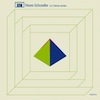 Pierre Schaeffer break from his long standing experiments with manipulating recordings of real-life sounds, away from the concrète and closer to something more akin to the electronic works of Henri Pousseur or Karlheinz Stockhausen. Utilising only synthesized sounds, this album is a tantalizing glance down a path that Schaeffer never fully explored but based on these pieces, the results of such explorations would be mind-blowing.
Pierre Schaeffer break from his long standing experiments with manipulating recordings of real-life sounds, away from the concrète and closer to something more akin to the electronic works of Henri Pousseur or Karlheinz Stockhausen. Utilising only synthesized sounds, this album is a tantalizing glance down a path that Schaeffer never fully explored but based on these pieces, the results of such explorations would be mind-blowing.
This inaugural release for yet another new Editions Mego sub-label, Recollection GRM, will be the first of many classic or unsung musique concrète releases from the GRM archives (also reviewed this week is an LP by Guy Reibel). This particular version of Le Trièdre Fertile has been reissued on CD several times (including the many instances of INA GRM’s wonderful L’Œuvre Musicale box set) but this is the first time it has been issued on vinyl and the sleeve has been given a facelift by Stephen O’Malley. Before I even put the needle down, I am impressed by the care and quality of the album and after I put the needle down, the music makes me forget these material things.
Immediately, it is obvious from the opening seconds of "Plutôt Dynamique (Étude Banale)" that this will be a very different Schaeffer record. The clean, buoyant electronic sounds (generated for Schaeffer by Bernard Dürr) are miles away from the rough concrète sounds of his earlier works. Here, Schaeffer employs a clinical precision that I would associate more with something from a recent Raster-Noton release than an almost 40-year-old recording. Throughout the various movements, Schaeffer takes the themes outlined in the opening section and manipulates, edits and adds to them to form an ever-evolving change in color and mood. Amazingly, it still sounds utterly futuristic in the way that great science fiction from the middle of the 20th century remains prescient and applicable now despite the massive advances in knowledge and technology.
While the range of tones used by Schaeffer are quite limited, he nevertheless uses them to create a vivid and detailed work that draws on his concrète-style insight but with a musical inventiveness that has been absent in his earlier works. "Moins Banal (Interlude, ou Impromptu)" could be a piece of soundtrack music; rhythmic and melodic enough not to offend but strange and suspenseful enough to be more than an exercise or study in technique. Similarly, "Tocccata et Fugue" is a proto-dance work that could be one of Kraftwerk’s weirder moments or even an outtake from Throbbing Gristle’s 20 Jazz Funk Greats.
It would have been great if Schaeffer had made more compositions in this style but in his later years he devoted more time to teaching before tragically succumbing to Alzheimer’s prior to his death in 1995. I can only dream about what sort of sounds or approaches he might have developed. However, as a parting gift to the world, it is very hard to fault Le Trièdre Fertile which is a stroke of genius by any standard, including those of a man who had previously shook the very idea of music to its core.
samples:
 
Read More
- Administrator
- Albums and Singles
 Last year's self-titled, self-released album felt like a major creative breakthrough for Nadler, as she found a very effective way for her distinctive, ghostly songs to coexist with a bit more light and life. The Sister, billed as its companion album, turns out to be something of a lateral move rather than an evolution or continuation. It is certainly more melancholy, spare, and monochromatic than I expected, but it largely overcomes those hurdles by being such a meticulously crafted, focused, concise, and thematically coherent song suite. As a whole, it is perhaps a bit weaker than some of Marissa's other efforts, but some of the individual songs are easily among her best.
Last year's self-titled, self-released album felt like a major creative breakthrough for Nadler, as she found a very effective way for her distinctive, ghostly songs to coexist with a bit more light and life. The Sister, billed as its companion album, turns out to be something of a lateral move rather than an evolution or continuation. It is certainly more melancholy, spare, and monochromatic than I expected, but it largely overcomes those hurdles by being such a meticulously crafted, focused, concise, and thematically coherent song suite. As a whole, it is perhaps a bit weaker than some of Marissa's other efforts, but some of the individual songs are easily among her best.
Despite a vague continuation of some of Marissa Nadler's lyrical themes and the return of most of the same collaborators, The Sister essentially feels like a total negative image of its predecessor.  The most significant difference is a pretty damn dramatic one, as last year's effort sounded like Nadler fronting a languorously swaying alt-country band and this basically sounds like an intimate and decidedly non-swinging solo performance.  Evidence of other musicians certainly exists, but aside from Orion Rigel Domisse's piano in "Love Again, There is a Fire" and the drums in "The Wrecking Ball Company," contributions are pretty much relegated to subtle coloration.  That is perfectly fine by me, as the melancholy, nocturnal feel of these songs is well-served by their spare, minor key arpeggio accompaniment.  The album would be a trainwreck if it was not, as Nadler only departs from her wistful acoustic arpeggiations once (on the aforementioned "Love Again," the album's weakest, most heavy-handed piece).  That is not an exaggeration at all, as she never even builds up to strumming an acoustic guitar–these are unwaveringly slow, fragile, and achingly poignant songs.  The whole thing evokes old, lonely New England houses, heartache, and moonlit nights, which is a pretty wonderful aesthetic in small doses, but could get suffocating sad and numbingly one-dimensional over the course of an entire album.  Nadler, thankfully, was self-aware enough to consider that and wisely kept The Sister to a lean half-hour.  That is the perfect length for this suite.
Of course, she was never in much danger of overstaying her welcome: despite the very specific formula and limited palette on display, Marissa's songwriting remains wonderful.  She manages to find quite a lot of room for variety within her very narrow scope.  Nearly every song boasts at least one strong hook and Nadler's singular and sensuous voice swoops hauntingly and movingly throughout.  Despite the inexplicable use of a flanger near the end, the sweetly sad "In a Little Town" is a damn near perfect song, and there are at least three or four others that reach similarly great heights (like "Apostle" and "The Wrecking Ball Company," for example).  That is a high success rate for an 8-song album.  Also, Nadler's craft goes quite a bit deeper than just melody and atmosphere, populating her songs with an enigmatic cast of characters whose stories are not immediately graspable.
I love albums with a healthy dose of mystery, as it makes repeat listening seem much more enticing than usual.  It is admittedly a bit hard for me to fully accept this as "the new Marissa Nadler album" given its brevity, narrow focus, and stylistic divergence from her last record, but it is a pretty inspired and irresistible effort regardless of how I ultimately decide to categorize it.
samples:
 
Read More
- Administrator
- Albums and Singles

It is fitting that this album found a home on David Tibet's Coptic Cat imprint, as it is not only unusual, but unusual in a rather novel way: Thiel's lilting, simple ballads (backed by Michael Cashmore) hearken back to a much more innocent time.  On one hand, her wide-eyed, poetic lyrics and earnest delivery recall the golden age of English folk, but in another (weirder) sense it feels like she is quixotically making pop music for an era that is either long departed or never existed at all.
I have to admit that I probably would not have given this album too much attention were it not for the involvement of Cashmore and Tibet and their historic good taste.  That is not to imply that Steffi is somehow lacking as an artist, but there are some superficial issues that I had quite a difficult time getting past.  The first and most conspicuous is the almost total lack of any textural grit or melodic edge or dissonance (traits that the crystalline production only enhance).  For the most part, Steffi's songs are very pretty and bright, with only occasional passing shadows.  Also, her voice is very strong and pure, which reminds me of an earlier era when the actual quality of someone's singing voice was considered important.  It reminds me of show tunes in a weird way too, but without the hostility that usually accompanies such thoughts.
Unfortunately, the album also features one unambiguously baffling misstep: the song "Circling Suns" features a very "'80s hard rock" electric guitar crescendo that totally disrupts the album's prevailing aesthetic and makes me wonder what the hell Cashmore and Thiel were thinking.  That concludes my formal list of grievances, but I also wish Cashmore had stepped into the spotlight a bit more, as I always enjoy his work.  I certainly cannot fault him for allowing this to be Steffi's show though (and his closing untitled instrumental is a pretty decent consolation prize).
Thankfully, I was able to get past most of my issues to some degree (with repeat listens) and realized that there is a bit more substance to Late But Never than is apparent on its surface.  Most of that depth is lurking within Thiel's lyrics, as her deceptively pleasant cooing conceals unsettling lines like "dead factories on smoke grey mornings...the factories, they snap at girls like you."  Also, in a less specific sense, Steffi's words and aesthetic seem to be completely guileless and utterly detached from anything resembling popular music circa 2012.  Whether that is due to naivete or a bold, pure vision is a mystery to me, but it is certainly refreshing and unusual in any case–there is a real sense of joy, exuberance, and authenticity here.  Consequently, it is hugely frustrating to hear that vibrance and heart buffed to a professional sheen.
The raw material for something much better is certainly here (charisma, strong melodies, bittersweet and poignant lyrics, solid songwriting, effective arrangements, etc.), but it is all too bright, smooth, and insubstantial to connect with me on any kind of deep level.  That said, there remains some rather beautiful pieces (particularly "Tonight" and "A Bird") and a whole lot of promise–it just all could have been much more compelling to me if the production had matched the intimate, homespun feel of the songs or if mixing duties had been handed over to someone a bit more deviant and ambitious.
Samples:
 
Read More
- Administrator
- Albums and Singles
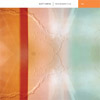
As a companion piece to Line's reissue of Lovesliescrushing's CRWTH (Chorus Redux) from earlier this year, guitarist/instrumentalist Scott Cortez has also released a work of guitar ambience from the latter portion of the '90s that is simultaneously reminiscent of the era's sonic fringes, yet sounds just as fresh today as it would have then.
Due to its composition (all processed guitar) and era of initial recording, I can't help but compare Cortez's guitar experimentations with that of Robert Hampson's Main project, who was active at this time as well.Even though the work of both artists would fit comfortably in the isolationist scene from the period, both construct their guitar work into very different frameworks.While Hampson's always sounded as if he was creating microscopic colonies of organisms via layers of digital processing, Cortez's sound feels more atmospheric in the literal sense.The deconstructed tones and hums of guitar are stretched into stratospheric layers of sound, sometimes icy, other times warm and engaging.
Twin Radiant Flux is a single piece broken into three segments, which are indexed into a total of nine tracks.It opens with near silence, with only the most subtle swells of sound that carry an odd, unnatural warmth.It builds in complexity, but then splits apart into even more sparse territory before the sound gets heavier, with dense sounds welling up that actually resemble an electric guitar at times, but only in the loosest of senses.With the heavier sounds comes a more dramatic ambience, bringing a cinematic sense to close the section out.
The second movement begins with ominous sustained notes, occasionally resembling bowed guitar strings but either way bringing a dark, glacial mood along.As the section continues into its second half, it retains the heavy sound briefly, but then retreats, leaving a thinner, but still dramatic motif that brings along rhythmic swells of guitar that trumpet along for most of the duration.
The final portion again opens by retaining the almost recognizable guitar sounds, beginning forcefully and then withdrawing to quiet, pensive textures.The final two sections bring the guitar back, but in the form of shimmering rays of sonic light, pulling out of the cold bleakness of before and into gentle and beautiful skies.By the end the overt guitar is still there, but eventually becomes organ like textures before closing with the same minimal tones that opened the album.
Given Cortez's reliance on Luddite methods:other than guitar most of the output here is from looping pedals and four track cassette recordings, the wide array of sound and emotion conveyed on Twin Radiant Flux is even more impressive.There are a multitude of other artists working in similar fields who don’t come close to the powerful work here with an array of DSP software packages and digital multitracking setups.While the sound is somewhat sparser without the use of LLC vocalist Melissa Arpin-Duimstra’s voice as an instrument, there is a purity here that gives the album its own distinct feel.
samples:
 
Read More
- Administrator
- Albums and Singles
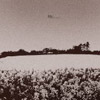
Originally released in 2004, the limited quantity and distribution of the original Heart Ache EP surely resulted in a bulk of its listeners relying on less than honest means of hearing it. Now available widely with recently finished EP that began around the same time, it is a wonderful opportunity to hear how things have changed with Jesu, as well as stayed the same, in the past six years.
While the first disc in this set, the two track Heart Ache, is the first actual Jesu release, I always felt the project was born in the literal closing moments of the final Godflesh LP Hymns.The hidden track that ended that album was one of the few instances of gentle guitar and melodic, unprocessed vocals by Justin Broadrick, who often relied on a malignant growl or a battery of effects to obscure his voice.Soon after that, Godflesh dissolved and after a brief respite, Jesu was born.The elements of Jesu began appearing long before the demise of Godflesh, however.From the melodic vocals of "Slateman" to the lush string synths of "Cold World" into the deconstructed guitar samples of "Flowers" remix, the pieces of Jesu were always there.
Ironically enough, the opening moments of "Heart Ache" could very well be a Godflesh song.With its detuned, open guitar squall and stiff Alesis drum machine rhythms (which hadn't been heard consistently since 1994's Selfless), the first six minutes sound very much like one of the extended Godflesh improvisations of times past.However, once the riffs die away and are replaced by sampled choruses and slightly digitalized, but otherwise pure guitar tones, the true sound of Jesu comes about.Broadrick's vocals are mostly sung without the multitude of effects he previously relied on.While the track lacks the depth and diversity of latter day Jesu long-form pieces such as "Sun Down" or Infinity, there's enough for it to stay captivating.
"Ruined" opens, in my opinion, as strongly as "Heart Ache" ended, with a sparse piano line that slowly drifts into dark, reverberating tones before going into a grinding guitar/drum machine duet that once again isn’t far removed from what Broadrick was doing with Godflesh, but again with more naked and overt vocals.However, when it becomes a repeated pastiche of a barked "Right!/Wrong!," it goes too far into the realm of metal for my liking.The dour closing synth strings and guitar melodies that lead the closing third of the song make up for the unnecessary aggression, in my opinion.
The second disc, Dethroned, is an unfinished EP from around the same time as Heart Ache, that was just recently completed.Given Broadrick's recent refocusing of Jesu as a guitar oriented project, the tracks sound both vintage and new.The title track again emphasizes the guitar lead sound that Jesu began with, and then returned to in earnest on last year's Opiate Sun.The hallmark of the "newer" Jesu is present on Broadrick's mulitracked vocal harmonies, though here presented with a disorienting series of disparate delays.
The chugging, muted riffs and stiff beat of "Annul" give a vintage feel, but again, Broadrick is singing more than he ever did on prior albums or projects.What is surprising is its rather conventional structure, especially next to the two sprawling tracks from Heart Ache.The beautiful "Aureated Skin," with its slow, funeral pace, haunting synths and reverberated vocal melodies feel like much more than just a nod to The Cure's Faith-era influence on the project, but far more successful than the unfortunate cover of "The Funeral Party" Jesu contributed to the Perfect As Cats compilation.
The closing "I Can Only Disappoint You" is perhaps the most naked sounding song I’ve ever heard Broadrick do, with its sparse rhythm, simple guitar and untreated vocals, a far cry from the dense shoegaze of Silver or Conqueror.With the odd presence of tape hiss that seems to bleed in at times, it feels like a bedroom demo that wasn’t meant for public consumption, exacerbated its intimate sound.As usual, the Japanese label Daymare has added an additional track, this time an extended dub mix of "I Can Only Disappoint You" that adds little to the original and strips away some of the intimacy of the original.Unlike some of the extras the label has added, this one isn’t that essential.
Considering the development of the Pale Sketcher as an outlet for Broadrick’s electronic oriented work and an impending Godflesh resurrection with the return of G.C. Green, I wonder where exactly Jesu will fit into the grand scheme of things.Considering Justin Broadrick has explicitly said he uses Jesu as his pop music project, I hope it doesn't get lost in the shuffle of new side projects and old bands returning.It has its own distinct sound that continues to be polished via split releases and solo EPs, and I hope this gentler, softer side isn't forgotten.
samples:
 
Read More
- Administrator
- Albums and Singles
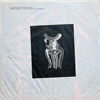 This 1986 album was the beginning of Zoviet France’s Charm, Ceremony, Chance, Prophecy tetralogy and continued the collective's shift away from harsher textures and lo-fi production towards a cleaner and more restrained aesthetic.  Misfits occupies something of a lull in the Zoviet France discography, as it is not nearly as strong as earlier releases like Eostre, Gris, or Norsch nor does it give much hint of how much potential such a change in direction actually held.  Despite that, it still boasts a few excellent pieces, one of which ranks among the band’s finest work.
This 1986 album was the beginning of Zoviet France’s Charm, Ceremony, Chance, Prophecy tetralogy and continued the collective's shift away from harsher textures and lo-fi production towards a cleaner and more restrained aesthetic.  Misfits occupies something of a lull in the Zoviet France discography, as it is not nearly as strong as earlier releases like Eostre, Gris, or Norsch nor does it give much hint of how much potential such a change in direction actually held.  Despite that, it still boasts a few excellent pieces, one of which ranks among the band’s finest work.
Red Rhino/Charrm
Sadly, I was not cool enough at age 11 to have picked this up when it came out, but if I had, I would have been a bit confused as to what Zoviet France was going for. Given the benefit of hindsight, it is a logical stage in their evolution, but when compared to only its predecessors, it seems a bit like ZF lost the plot a bit. Misfits, Looney Tunes, and Squalid Criminals is a comparatively tame and minimal affair and there is quite a bit of filler included for just a nine-song album.  Most of these pieces suffer from a lack of intensity, density, or progression, all of which were ineffectually replaced by an unwavering faith in the powers of clarity, space, and adding lots of echo to percussion loops.  History has proven that their instincts were ultimately mostly right, but at this stage of the game, the collective had not quite gotten all pieces quite in place for a successful "ambient" album.
A couple of the longer pieces sound pretty dated and unrewarding today, like "Host-Blowing the Instrument,""Flote," and "Rattle Stick Cruss," as they have very little substance beyond very simple ethno-percussion loops being reversed or heavily echoed.  In fact, they kind of sound like Jamaican dub with all of the song-like aspects removed: no real melody, no strong beat, just plenty of reverb- and echo-heavy clattering and maybe an occasional didgeridoo or ghostly melodica.  Also, the few slightly harsher "old style" pieces, like "Signal 2" and "Signal 3" sabotage their effective use of garbled vocals and ominous tension by being extremely short.  It feels like the band was being pulled in two separate, opposing directions and didn't realize that there was quite a bit of more welcoming musical terrain available between them. However, things get quite a bit better by the end of the album.
The brief but hypnotically pulsing "Gesture, Signal, Threat" is the album's first clear moment of success, though it perhaps errs in being a bit too aggressive with reversed tape loops.  "Semasen," however, tackles roughly the same territory, but works dramatically better, adding a cool, blurred-sounding bass line and a warm, drugged haze.  Equally importantly, it is given some time to stretch out and achieve a healthy degree of cumulative power.  It almost seems like Zoviet France had an epiphany near the end of the recording session in which they realized that striving for minimalism and nuance doesn't necessarily mean that songs have to be limited to just one or two ideas.  Whether such a realization actually occurred is anybody's guess, but the album's closing piece pulls all the threads together in way that makes sense and towers above everything that preceded it.
The provocatively titled "They're Eating the Passengers" is a minor masterpiece of sinister tension, weaving echo-warped tapes of plane hijackers with an insistent pulsing and brooding smears from an Eastern-sounding string instrument.  There's still a heavy reliance on studio effects and repetition, but in this instance they are used in service of a very strong musical idea rather than as ends unto themselves.  Also, it helps that the sarod or tanpura (or whatever the hell it is) is used melodically as well as texturally.  I'm actually a bit mystified as to why such an excellent piece wound up being released at the end of a lackluster album rather than being used as the cornerstone of a newer, better album, but I imagine they had their reasons.
Anyone attempting to compile a retrospective of Zoviet France's work would be a bit crazy not to include "Passengers" and possibly "Semasen," but Misfits, Looney Tunes, and Squalid Criminals’ appeal effectively ends there (unless you can find a fully intact copy of the record, since the album art is pretty neat too). Fortunately, this stage turned out to be just an awkward transition rather than the beginning of Zoviet France's demise, as some of their greatest work was still to come.
Samples:
 
 
 
Read More
- Administrator
- Albums and Singles
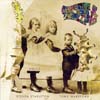 This year is a good year for Nurse With Wound-related reissues and this re-release of the collaboration between Steven Stapleton and Tony Wakeford is a good way to finish off 2009. Comprising of the original album on one disc and numerous unused mixes from the original sessions and new remixes from Wakeford and others; this is a good lesson in how to do justice to a classic album. This is a great reissue which has brought back an old favorite from the depths of the deleted release bin.
This year is a good year for Nurse With Wound-related reissues and this re-release of the collaboration between Steven Stapleton and Tony Wakeford is a good way to finish off 2009. Comprising of the original album on one disc and numerous unused mixes from the original sessions and new remixes from Wakeford and others; this is a good lesson in how to do justice to a classic album. This is a great reissue which has brought back an old favorite from the depths of the deleted release bin.
Although, Stapleton is essentially Nurse With Wound, the fact that this was released under his own name is revealing. Revenge of the Selfish Shellfish sounds like something else altogether and it is not just the large presence of Wakeford as it is also removed from his solo work and the Nurse With Wound releases that he also features on. The music swerves between Stapleton’s crooked surrealism and Wakeford’s more song orientated approach but never settles on either of the duo’s respective styles. The liner notes state that neither artist was compos mentis either due to drink or drugs for the recording session so it seems that in their inebriated and uninhibited state that they forged some new middle ground between them.
Much of the album goes along similar lines, sinister collections of sonic oddities and ancient musical forms combining in strange but lovely forms. “Falling From Heaven” ushers in the album with a supernatural allure, soft metallic drones captivating the listening instantly. “Walk the White Ghost” and “Lucifer Before Sunrise” form a mesmerising centrepiece to the album; the intoning of apocalyptic lyrics over doom-laden beats, funeral marches through the landscape of a Zdzisław Beksiński painting. However, by far and away the jewel in Revenge of the Selfish Shellfish’s crown is the sprawling audio mulch that is “The Frightened City,” where harsh electronic loops give way to noise, field recordings and easy listening jazz (and providing an early view of what modern Nurse With Wound would sound like). However, Wakeford’s melodic awareness relieves the piece of some of its unhinged chaos but this accentuates the weirdness rather than reduces it.
In addition to the original album, this reissue also includes a comprehensive bonus disc of goodies including unused mixes from the original sessions and brand new mixes by a bunch of like-minded artists. The unused mixes appear to have only been dropped for reasons of album flow as they are just as good as what made it out on the original album, particularly “Mussel” which is a grizzly cousin to “The Frightened City.” Also included are two new mixes by Wakeford, neither of which stray from the original album much. I am not sure what I was expecting but it has been over 15 years since this album came out and I would have thought he might have something new to bring to the old material. Perhaps fresh ears were all that were needed as the other remixes work quite well, giving a new spin on familiar material.
It is great to see this album back in print, especially with all these extras. A huge amount of love has been put into restoring Revenge of the Selfish Shellfish and it shows (right down to the beautiful double gatefold sleeve which is far superior to the crummy jewel case of the original). This album has stood the test of time admirably and is as potent today as ever.
samples:
- Walk the White Ghost
- The Frightened City
- Oyster Sauce Remix (Brian Conniffe)
Read More



